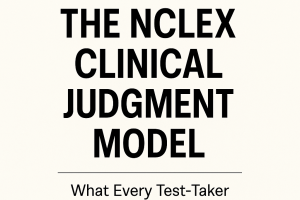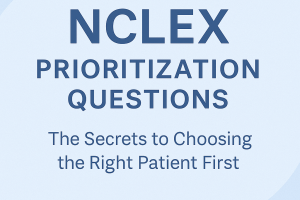Understanding Cardiac Diseases and Disorders: Symptoms, Risk Factors, and Prevention

Cardiac diseases and disorders, often referred to as cardiovascular diseases (CVD), are among the leading causes of morbidity and mortality worldwide. These conditions affect the heart and blood vessels, leading to serious health complications if not managed properly. In this blog post, we’ll explore the common types of cardiac diseases, their symptoms, risk factors, and prevention strategies.
Common Types of Cardiac Diseases and Disorders
1. Coronary Artery Disease (CAD)
- Description: CAD occurs when the coronary arteries, which supply blood to the heart muscle, become narrowed or blocked due to plaque buildup (atherosclerosis).
- Symptoms: Chest pain (angina), shortness of breath, fatigue, and heart attack.
2. Heart Attack (Myocardial Infarction)
- Description: A heart attack happens when a part of the heart muscle is damaged or dies due to a lack of oxygen-rich blood.
- Symptoms: Severe chest pain, pain radiating to the arm, neck, or jaw, sweating, nausea, and shortness of breath.
3. Heart Failure
- Description: Heart failure occurs when the heart cannot pump enough blood to meet the body’s needs. It can be due to weakened heart muscle or other heart conditions.
- Symptoms: Shortness of breath, fatigue, swollen legs, rapid or irregular heartbeat, and persistent cough.
4. Arrhythmias
- Description: Arrhythmias are irregular heartbeats caused by problems with the heart’s electrical system. They can be too fast (tachycardia), too slow (bradycardia), or erratic (atrial fibrillation).
- Symptoms: Palpitations, dizziness, fainting, shortness of breath, and chest pain.
5. Valvular Heart Disease
- Description: This condition involves damage to one or more of the heart’s valves, affecting blood flow within the heart.
- Symptoms: Fatigue, shortness of breath, irregular heartbeat, swollen ankles or feet, and chest pain.
6. Cardiomyopathy
- Description: Cardiomyopathy is a disease of the heart muscle that makes it harder for the heart to pump blood. It can lead to heart failure.
- Symptoms: Fatigue, breathlessness, swollen legs, and irregular heartbeat.
7. Congenital Heart Defects
- Description: These are structural problems with the heart present at birth. They can range from simple defects to complex conditions.
- Symptoms: Cyanosis (bluish tint to skin), rapid breathing, fatigue, and poor blood circulation.
Risk Factors for Cardiac Diseases
Several risk factors can increase the likelihood of developing cardiac diseases:
1. Lifestyle Factors
- Smoking: Damages blood vessels and increases blood pressure.
- Poor Diet: High intake of saturated fats, trans fats, cholesterol, and sodium.
- Physical Inactivity: Leads to obesity and associated conditions like diabetes.
2. Medical Conditions
- High Blood Pressure: Puts extra strain on the heart and blood vessels.
- High Cholesterol: Leads to plaque buildup in arteries.
- Diabetes: Increases the risk of heart disease.
- Obesity: Associated with high blood pressure, high cholesterol, and diabetes.
3. Genetic Factors
- Family History: A family history of heart disease increases risk.
- Age and Gender: Risk increases with age; men are generally at higher risk at a younger age compared to women.
4. Other Factors
- Stress: Chronic stress can lead to behaviors and factors that increase heart disease risk.
- Alcohol and Drug Use: Excessive alcohol and drug use can lead to heart damage.
Symptoms of Cardiac Diseases
The symptoms of cardiac diseases can vary widely depending on the specific condition but commonly include:
- Chest pain or discomfort
- Shortness of breath
- Fatigue and weakness
- Palpitations or irregular heartbeats
- Swelling in the legs, ankles, or feet
- Dizziness or fainting
- Persistent cough or wheezing
Prevention and Management of Cardiac Diseases
Preventing cardiac diseases involves lifestyle changes and managing existing health conditions. Here are some key strategies:
1. Healthy Diet
- Eat a balanced diet rich in fruits, vegetables, whole grains, lean proteins, and healthy fats.
- Limit intake of salt, sugar, and unhealthy fats.
2. Regular Exercise
- Aim for at least 150 minutes of moderate-intensity aerobic exercise per week.
- Include strength training exercises at least twice a week.
3. Avoid Smoking and Limit Alcohol
- Quit smoking and avoid secondhand smoke.
- Limit alcohol consumption to moderate levels (up to one drink per day for women and up to two drinks per day for men).
4. Monitor Health Parameters
- Regularly check blood pressure, cholesterol levels, and blood sugar levels.
- Visit your healthcare provider for routine check-ups and screenings.
5. Stress Management
- Practice stress-reducing techniques such as mindfulness, meditation, yoga, and deep breathing exercises.
6. Medication Adherence
- Take prescribed medications as directed by your healthcare provider to manage conditions like high blood pressure, high cholesterol, and diabetes.
Conclusion
Cardiac diseases and disorders are serious health conditions that require attention and care. Understanding the types, symptoms, and risk factors of cardiac diseases can help in early detection and effective management. By adopting a heart-healthy lifestyle, including a balanced diet, regular exercise, stress management, and avoiding harmful habits, you can significantly reduce your risk of developing cardiac diseases. Remember to consult with your healthcare provider for personalized advice and regular health check-ups to maintain optimal heart health.






